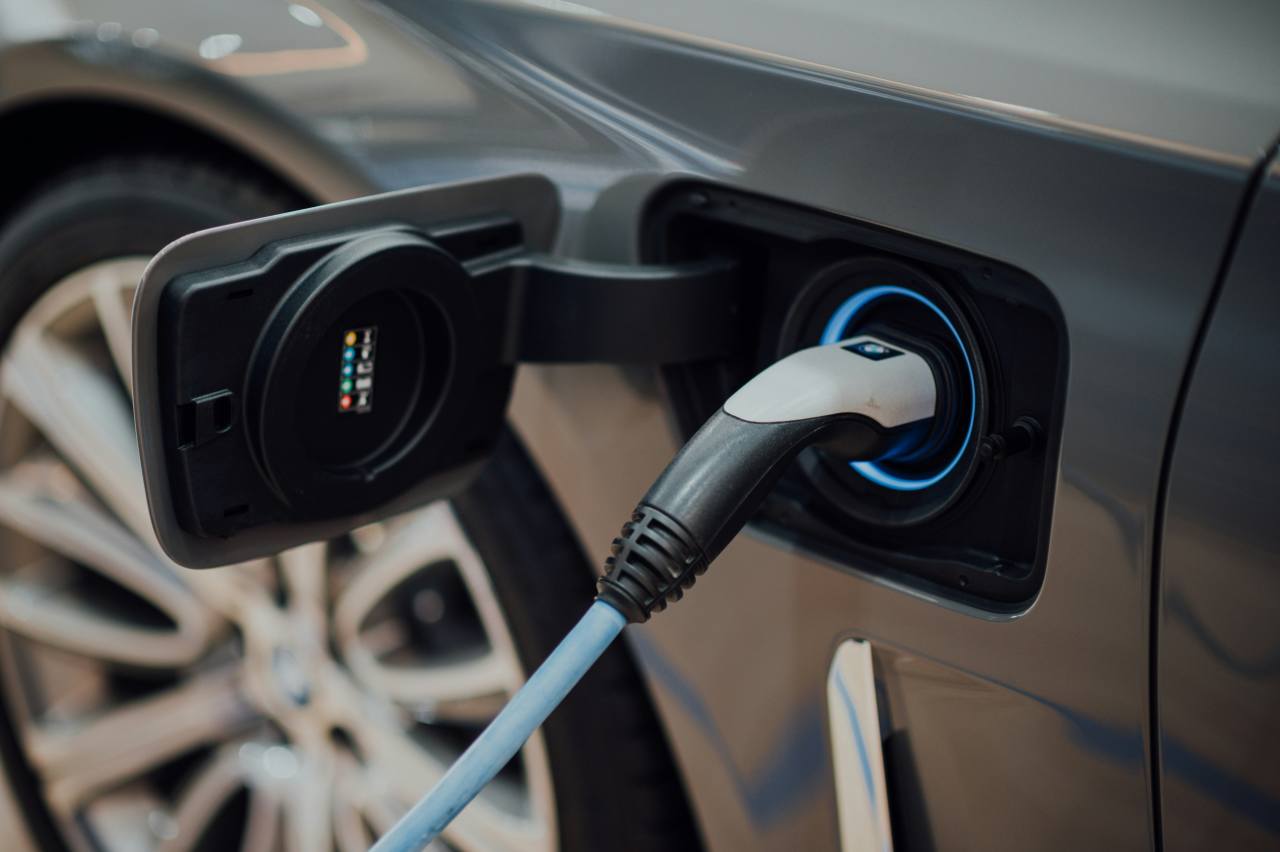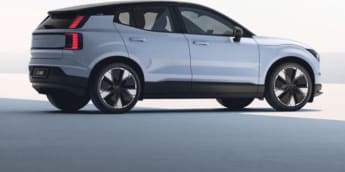While the transition from combustion to electric vehicles continues to generate much hand wringing and gnashing of teeth across the automotive world, Volvo is calmly sitting in the EV lotus position, sure of its strategy and continuing to roll out new models in accordance with it.
The famous Swedish maker is aiming for a full-electric product line-up globally by 2030 and to be carbon-neutral as an entity in 2040. And the local operation is pushing that bit harder by committing to a pure-EV range here by 2026.
And the latest step in achieving that goal has arrived in the shape of the Volvo EX30, a compact electric SUV, offered in three grades and two motor configurations to compete with the likes of the Kia Niro Electric, Mini Cooper Electric and Renault Megane E-Tech, while also chipping away at the pricier BMW iX2 or next-size-up options like the Hyundai’s Ioniq 5, Tesla Model Y and Subaru Solterra/Toyota bZ4X twins.
CarsGuide attended the EX30 launch drive, starting in Adelaide, South Australia and winding into the hills around the Barossa Valley to the city’s north. So, stay with us to find out how this significant Scandinavian newcomer shapes up.
Volvo EX30 2024: Single Motor Extend Range Plus
| Engine Type | 0.0L |
|---|---|
| Fuel Type | Electric |
| Fuel Efficiency | 0.0L/100km (combined) |
| Seating | 5 |
| Price From | $59,990 |
Price and features – Does it represent good value for the price? What features does it come with?
The EX30 is offered in three models, the Single-Motor Extended Range in Plus grade at $59,990, before on-road costs, or Ultra spec at $64,990. The Twin Motor Performance Ultra weighs in at $69,990.
That puts it in the same part of the world as other small Euro EV SUVs like the Mini Cooper SE ($64,975-$65,325) and recently released Renault Megane E-Tech ($64,990). As well as the Kia Niro Electric ($66,590-$72,360).
But it also puts the squeeze on BMW’s new iX2 ($82,900-$85,700) and slightly bigger contenders like the (non-N) Hyundai Ioniq 5 ($65,000-$84,000), Tesla Model Y ($63,500-$82,900), Subaru Solterra ($69,990-$76,990) and Toyota bZ4X ($66,000-$74,900).
.jpg)
Aside from the standard safety and performance tech covered separately a little later, the entry-level Plus version of the EX30 Single-Motor Extended Range features a solid list of standard equipment, including a ‘dual tone’ roof treatment, ‘Digital Key’ (remote lock/unlock and low-speed car manoeuvring via smartphone), wireless charging, ambient lighting, Harman Kardon audio, wireless Apple CarPlay and (voice-activated) Google functionality, in-built navigation, dual-zone climate control, power-operated tailgate, front parking sensors, adaptive cruise control, LED head-, tail-lights and DRLs, rain-sensing wipers, 19-inch alloy rims and a 12.3-inch (portrait) tablet display for virtually all media and car functions (updated over-the-air).
.jpg)
Step up to the Ultra grade (in single or twin motor) and additional fruit includes a (fixed) panoramic roof, 360-degree camera view, ‘Park Assist Pilot’, electrically adjustable heated front seats (with four-way lumbar adjust), tinted rear windows, a heated steering wheel and 20-inch alloys.
Interestingly, the nine-speaker, 1040W Harman Kardon audio set-up is driven through a single sound bar-style installation across the dash at the base of the windscreen. Sound quality is top-shelf and Volvo says this centralisation not only liberates space in the doors and elsewhere but reduces weight and material use.
Overall, within its minimalist approach, the EX30 stacks up well in terms of included features for the asking price and relative to its competitors.
EV Specs for Volvo EX30 2024
| Drivetrain | Permanent magnet synchronous motor(s) / single-speed auto |
|---|---|
| Battery capacity | 69kWh |
| Battery type | lithium ion |
| Range | 460 - 480km (WLTP) |
| Plug type | CCS Combo2 |
| DC charge rate | 153kW |
| AC charge rate | 11kW |
| Motor output | 200kW/343Nm - 315kW/543Nm |
| Efficiency | 17.5 - 18.0kWh/100km |
Design – Is there anything interesting about its design?
Despite the lack of a traditional grille the EX30 is instantly recognisable as a contemporary Volvo and that’s down to more than a stylised version of the Swedish maker’s ‘Iron Mark’ logo on the nose.
Everything from the signature ‘Thor’s Hammer’ headlights to the chunky rear haunches, blocky indents along the flanks and characteristically curved bonnet give the game away.
Standard rims are 19 inch, however, the launch program was dominated by the Ultra grade which runs on 20s and they fill the big wheel arches nicely.

There are five colours in the EX30 palette - ‘Cloud Blue’, ‘Vapour Grey’, ‘Crystal White’, ‘Onyx Black’ and an arresting, unique to the EX30 shade, ‘Moss Yellow’. A better name for that last one might be ‘Tennis Ball’.
The interior is strictly a leather-free zone, the cabin swathed in recycled and renewable materials such as flax (a renewable fibre derived from linseed plants), wool blend (70 per cent recycled polyester) and denim upholstery (created with waste fibres from the denim recycling process).
You can choose from four interior themes, or 'rooms' as Volvo refers to them. Specifically, ‘Breeze’, ‘Mist’, Pine’ and ‘Indigo’. And it feels cool, calm and collected inside the EX30 with soft tones dominating and rounded forms defining the multi-layered dash, seats and doors.
.jpg)
As well as different colours, each interior combination features a range of sustainable materials including Nordico, a textile made from recyclables such as PET bottles and “bio-attributed material” from forests in Sweden and Finland.
Despite Volvo’s huge focus on the use of sustainably sourced and recycled materials in the EX30’s production the standard of fit and finish is high. The only small snag I spotted was slightly wonky hems on the top of the rear seat map pockets.
Design highlights are the squared-off but grippy and easy-to-use steering wheel, the huge (fixed) panoramic glass (on a bright, warm SA day overheating wasn’t an issue), the sleek brushed metal interior door handles (look great, ergonomically brilliant) and the central screen managing just about everything (media and car set-up while providing vehicle data read-outs).
.jpg)
The operating system is pretty quick and intuitive to use, but it can take time and multiple screens to get to simple items like the head- and fog lights, for example.
Even opening the central glove box requires pressing a haptic button on the screen. And the lack of a physical console dial for quick audio adjustment is irritating, although there’s a +/- rocker switch on the steering wheel.
Feels like it’s best to set everything (climate, lighting, audio, etc) before getting mobile.
Practicality – How practical is its space and tech inside?
Measuring a fraction over 4.2m end-to-end, a little more than 1.8m wide and less than 1.6m tall the five-seat EX30 is city-sized. And even though the wheels are pushed out to the corners the 2650mm wheelbase is far from limo-like.
That said, the low-key, low-level dash design provides plenty of breathing space up front and headroom for the driver and co-pilot is excellent (helped in no small part by the Ultra grade's panoramic roof providing extra height ).
Move to the rear, however, and the limitations of the car’s overall footprint are apparent. Again, headroom is fine, but sitting behind the driver’s seat set for my (183cm) position toe- and legroom are marginal. And getting in and out of the back seat is an aggravating exercise thanks to a narrow door aperture and shallow opening angle.
.jpg)
The back seat will technically accommodate three adults but, despite the flat rear floor, you wouldn’t slot your worst enemy into the centre position on anything other than a super-short, emergency trip.
Cabin storage is plentiful, though, with long, wide bins in the front doors capable of accepting large bottles, a broad centre floor tray with a flip-open lower level, an angled phone shelf (the left side providing wireless charging) a small-ish glove box and a multi-stage sliding unit in the tunnel console incorporating two generous cupholders.
The rear door bins are also a good size and there are small map pockets on the front seat backs. But there’s no fold-down centre armrest which rules out dedicated rear cupholders.

To offset that somewhat there’s a slide-out drawer, complete with moose and pine forest graphics down the side, under the rear of the front console/centre armrest as well as a small oddments space near the centre-mounted window controls.
Connectivity and power runs to a pair of USB-C jacks in the front, another two in the rear as well as a 12-volt outlet in the boot.
Speaking of which, boot volume is 318 litres (VDA) which is passable for a car this size, expanding to 904 litres with the 60/40 split-folding rear seat lowered.
The boot floor is a two-level set-up providing space underneath for charging cables or maybe wet and/or grubby things if you’ve been to the beach or on an outdoor adventure. There’s also a small but handy ‘frunk’ under the bonnet.
There are four tie-down hooks for securing loose loads in the boot but don’t bother looking for a spare tyre. Your only option is an inflator/repair kit.
If you’re keen on towing, the rear-wheel drive EX30 single motor is rated for a 1400kg braked trailer (750kg unbraked), the all-wheel-drive twin-motor stepping the braked figure up to 1600kg.
Under the bonnet – What are the key stats for its motor?
As its name implies, the EX30 Single-Motor Extended Range is powered by a rear-mounted single permanent magnet synchronous motor sending 200kW/343Nm to the rear wheels via a single-speed reduction auto transmission.
And, yes, the Twin Motor Performance version adds a motor to the front axle for combined outputs of 315kW/543Nm going to all four wheels. Juice is provided by a 400V 69kWh lithium-ion battery.
To give those numbers some context the most powerful version of the 2WD Hyundai Ioniq 5 produces 168kW/350Nm, the Megane E-Tech delivers 160kW/300Nm, the Kia Niro’s at 150kW/395Nm and the Mini Cooper SE Electric sits at 135kW/270Nm. The AWD Ioniq 5 up the ante to 239kW/605Nm and the Model Y AWD is rated at 413kW/660Nm. So, this little Volvo stacks up well when it comes to powertrain specs.
Efficiency – What is its driving range? What is its charging time?
Volvo says single-motor EX30s have an estimated (WLTP) range of up to 480km with the gruntier twin motor sitting at 460km.
In terms of charging, peak DC capacity through the Type 2 CCS connection is 153kW and on a suitably rapid charger the 69kWh battery can be boosted from 10 to 80 per cent in around 30 minutes, which is pretty great.
The EX30’s 11kW on-board AC charger can top-up a depleted battery to full capacity in approximately seven hours when connected to three-phase power.
.jpg)
Official energy consumption for the EX30 Single Motor Extended Range is 17.5kWh/100km and 18.0 for the Twin Motor Performance.
On the roughly 200km launch drive program taking in stop-start CBD traffic, twisting B-road sections and some freeway running we saw dash indicated figures of 17.0kWh/100km for the single motor and 18.3 for the dual motor.
Not bad for a car with this much performance potential.
.jpg)
Driving – What's it like to drive?
It’s hard not to jump into any new EV for the first time with some preconceived ideas about what it might be like to drive. That is, quick with heaps of torque, super quiet and refined but borderline uncomfortably firm in the suspension.
Well, as they say, two out of three ain’t bad, because the EX30 is indeed satisfyingly quick, quiet and refined, but the surprise is the (strut front, multi-link rear) suspension is also agreeably compliant.
We covered stop-start city traffic, the suburban sprawl, twisty rural B-roads as well as some freeway running and the EX30 acquitted itself well across the board.
.jpg)
Even on coarse, pock-marked backroads, and despite low-profile (245/40 x 20) Goodyear Efficient Grip rubber, bumps and thumps are felt but to an impressively modest degree. Especially when you consider how small this car is and the relatively modest length of its wheelbase.
And when it comes to the 'quick' part Volvo says the (1810kg) single motor EX30 will sprint from 0-100km/h in 5.3 seconds while the (1960kg) dual motor lowers that number to a supercar-like 3.6sec.
In fact, it’s clear the Single Motor Extended Range is all the EX30 99 per cent of people will ever need. It’s refined, urgent in the city and an easy highway cruiser.
.jpg)
If you’re determined to impress friends and family the Twin Motor Performance is fast enough in a straight line to narrow your field of vision and have the kids yelping in delight (or fear). But the Single Motor doesn’t hang around.
The steering isn’t exactly the last word in road feel but it’s well weighted and the car turns into corners progressively and accurately.
With the motor in the back driving the rear wheels the Single Motor has a traditional RWD feel, but both versions remain balanced and predictable in twisty sections if you’re pushing on a little.
.jpg)
The front seats are comfy and supportive, even after lengthy stints on the road, the single-pedal regenerative braking mode works smoothly and a decent 11.0m turning circle combines with good all around vision to make parking easy (even before you tap into camera and proximity sensor assistance).
Worth noting that aside from the regen braking mode the physical brakes apply smooth linear stopping power, which isn’t always the case with pure EVs.
Under the heading of random observations, the column mounted gearshift is handy while freeing up extra space in the centre console, the Harman Kardon audio speaker set-up at the top of the dash delivers high-quality sound despite its unusual location and those big interior door handles are simply the best.
Warranty & Safety Rating
Safety – What safety equipment is fitted? What is its safety rating?
Confirming safety as a Volvo strength is a bit like introducing Rafael Nadal as a fairly handy tennis player. And the EX30 maintains the Swedish brand’s commitment to ensuring its cars' occupants stand the best possible chance of getting to their destination safely.
Active (crash-avoidance) tech is comprehensive, including lane-keeping aid, ‘Oncoming Lane Mitigation’, ‘Run-off road Mitigation’, ‘BLIS’ (Blind Spot Monitoring System) with steer assist, AEB (with vehicle, intersection, right/left turn, large animal, cyclist and pedestrian detection), collision avoidance and mitigation by braking and steering, oncoming mitigation by braking, pedestrian, cyclist and scooter steering avoidance, rear collision warning and mitigation, rear cross-traffic alert with auto brake (rear AEB), front cross-traffic with auto brake and road sign recognition.
There’s also ‘Intelligent speed assist’, adaptive cruise control, ‘Park Pilot Assist’, lane change assist, active high-beam, ‘Distance to Truck Assist’, a Park Assist camera, a rear view and door opening alert and a new driver alert system (checking eye and face movements around 13 times per second and monitoring ‘hands-on’ the steering wheel). Phew…

But if, despite all that, a crash is unavoidable there are dual-stage front airbags for the driver and front passenger, front side airbags, full-length side curtain bags, a driver’s knee airbag and a centre airbag (deployed from the inner side of the driver's seat) to help reduce head and thorax injuries in the event of a side impact.
Then, there’s a ‘Whiplash injury protection system’ (WIPS), a reversing camera, 360-degree camera view (with 3D view), tyre pressure monitoring and a ‘Volvo On Call’ back to base emergency contact function.
There are three top tether points for baby capsules/child seat and ISOFIX anchors on the outer rear seat positions.
And Volvo says it has also focused on battery integrity in the design of the chassis and safety cage, fine-tuning its approach with various forms of high-strength steel.
Despite the EX30 not being ANCAP tested yet, it's hard to think of any brand doing a better job when it comes to safety.
Ownership – What warranty is offered? What are its service intervals? What are its running costs?
The EX30 is covered by Volvo’s five-year, unlimited kilometre warranty, with the drive battery covered for eight years, both pretty standard for the category.
Roadside assistance is provided for five years with another three years added if the car is serviced in line with the recommended schedule at an authorised Volvo dealer. Nice.
The service interval is two years / 30,000km and the first two visits to the workshop cost $0, so the price is right for the duration of the five-year warranty.
Not only that, alternative transport options are offered and your car will be given a bath before you pick it up. Very nice.
.jpg)
Verdict
The Volvo EX30 is impressive. Despite its diminutive stature it delivers refinement and performance worthy of a much larger car. Add in good value-for-money, outstanding safety and a solid ownership proposition and the plus column starts to fill up.
If you can live with its ‘cozy’ rear seat, relatively modest boot and centralised, screen-based media and car control set-up there should be little else holding you back from serious investigation.
Note: CarsGuide attended this event as a guest of the manufacturer, with travel and meals provided.
Pricing Guides




.jpg)

.jpg)
.jpg)
.jpg)
.jpg)
.jpg)
.jpg)
.jpg)
.jpg)
.jpg)
.jpg)
.jpg)
.jpg)

.jpg)
.jpg)
.jpg)
.jpg)



































.png)







.jpg)

.jpg)




Comments